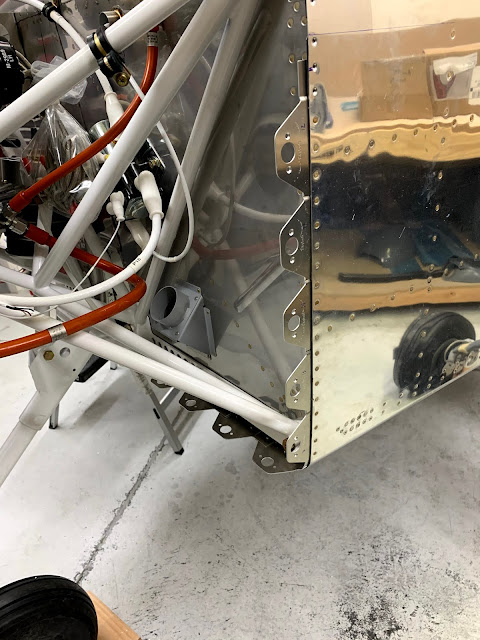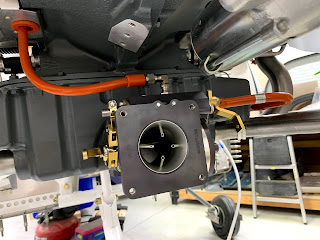First and foremost, I moved the fuselage to the hangar - specifically Parkers Towing and Transport moved the fuselage, and spent a good deal of time designing ramps for the main wheels for transport. The Parkers are great people, and were very interested in all aspects of my RV-14A - most importantly, they took great care to secure and transport my bird. I highly recommend them if you live in central Florida; they drove 50 miles each way for the transport, and now that they have transported two Van's aircraft (my buddy, Ken B's RV-14A and now mine), they are pros.
The rest of the past 2 weeks involved a bunch of odds-and-ends, in an attempt to finish as much stuff in the workshop prior to moving the fuselage. Specifically, I did the following:
- finished attaching Koger sunshade; cleaned canopy and removed some of the inside protective plastic (for sunshade); painted baggage covers for steps
- tightened alternator pulley/belt and torqued and safety-wired bolt; attached boot to p-lead of magneto
- lower cowl closeout completed w/distal part of sniffle line attached to it; attached step attach covers in baggage area (used thin nylon #8 washers so paint doesn’t chip when screws tightened)
- greased nosegear Zerk fitting with blue marine grease (had to push out the Aeroshell 5, which is more hygroscopic); added 2000deg fireshield barrier to “red cube” fuel flow transducer, since so close to exhaust pipe; prepared oil cooler scat tubing
- painted baggage floor closeout and access panel from baggage area to tailcone; finished oil door; vacuumed tailcone, tied up loose wires in tailcone
- cleaned baggage area and tailcone with damp cloth; closed out baggage area and passthrough to tailcone; started installing aft window (siliconed screws in roll bar; loose attach of 22 of 29 screws in aft section of window)
- finished installing and prosealing the aft window
- cleaned garage, moved plane outside to attach canopy (with wife and daughter helping); realized aft edge of canopy was touching parts of the aft window, so sanded and scraped aft part of canopy to ensure adequate gap (4 iterations - pain in the ass, but it’s done)
- prepped plane and workshop for fuselage move (final prep)
- moved the fuselage to airport hangar using Parker’s Towing; cleaned hangar; cleaned workshop some more
Here's a pic of the first step of the move:



























